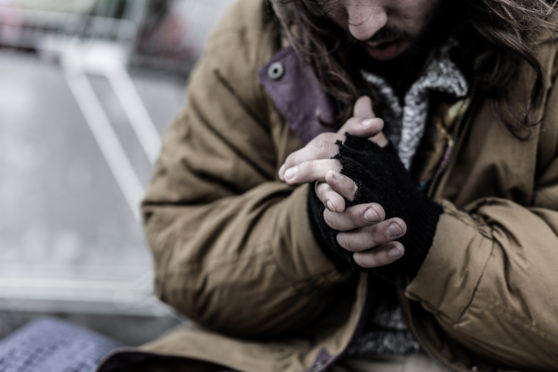
A rise in people injecting cocaine and homelessness are the key factors behind a “perfect storm” that has resulted in a 10-fold increase in HIV infection among drug users in Glasgow city centre, research has found.
In a seven-year study, experts from Glasgow Caledonian University (GCU) and Health Protection Scotland examined the drivers behind the UK’s largest HIV outbreak in more than 30 years in Glasgow.
More than 100 new cases of the infection were identified among drug users in the city between 2015 and 2017.
Before that the number of new cases had “remained stable” at about 15 a year among drug users across all of Scotland.
Dr Andrew McAuley, a senior research fellow in blood borne viruses at GCU, and the lead author of the paper, said there had been “a hugely significant increase in the prevalence of HIV infection in the population of people who inject drugs in Glasgow, largely driven by an outbreak of HIV in first detected in 2015”.
He also claimed the study, published in the Lancet HIV medical journal, “provides further justification” for those arguing for a safe drugs consumption room to be set up in Glasgow city centre – with more than nine out of 10 of those diagnosed with HIV now successfully engaged in treatment.
Speaking about the number of drug users with the virus, Dr McAuley said: “The prevalence of HIV has been low and stable in this population since major outbreaks of HIV in the 1980s in Edinburgh and Dundee.
“However, the prevalence of HIV in Glasgow has increased 10-fold among people who inject drugs in the past seven years, from just 1% to over 10% in the city centre.
“The key drivers of infection are an increase in cocaine injecting, and homelessness.
“We also have a large population of people who inject in public places in Glasgow at a time when HIV has re-emerged.
“A combination of these factors has created a perfect storm for rapid transmission of HIV among people who inject drugs in Glasgow.”
The research, carried out together with NHS Greater Glasgow and Clyde and the University of the West of Scotland, found the number of drug users with HIV went from one in 87 in 2011-12 to 25 out of 231 in 2017-18 – with the proportion of users who were infected going from 1.1% to 10.8%.
The study used information from four in-depth surveys – collectively called the Needle Exchange Surveillance Initiative (NESI) – conducted between 2011 and 2018 and involving almost 4,000 people who inject drugs in Greater Glasgow and Clyde.
The HIV outbreak in Glasgow occurred “despite the existence of a comprehensive harm reduction environment”, the research found, with more than one million clean needles and syringes distributed amongst drug injectors every year.
Dr McAuley said the research “provides further justification for interventions such as the proposed drug consumption room and heroin-assisted treatment services in Glasgow”.
He added: “Crucially, over 90% of the individuals diagnosed as part of the outbreak have been successfully engaged in HIV treatment as a result of the multidisciplinary response implemented by the health board.”
Dr Norah Palmateer, a GCU senior research fellow, who is the co-author of both the Lancet HIV and the NESI report, said: “We found that the sharp rise in cocaine injecting identified in NESI is the single largest risk factor for acquiring HIV in Glasgow, possibly because it is likely to cause individuals to inject more often which, in turn, makes them more vulnerable to infection.”
She added: “Our research identifies key determinants of HIV infection among a vulnerable population of individuals to inform public health interventions that can be targeted to prevent further new infections and to help test and treat those already exposed.
“This is in line with the vision of GCU – the University for the Common Good – one of whose aims is to deliver social benefit through research.”

Enjoy the convenience of having The Sunday Post delivered as a digital ePaper straight to your smartphone, tablet or computer.
Subscribe for only £5.49 a month and enjoy all the benefits of the printed paper as a digital replica.
Subscribe